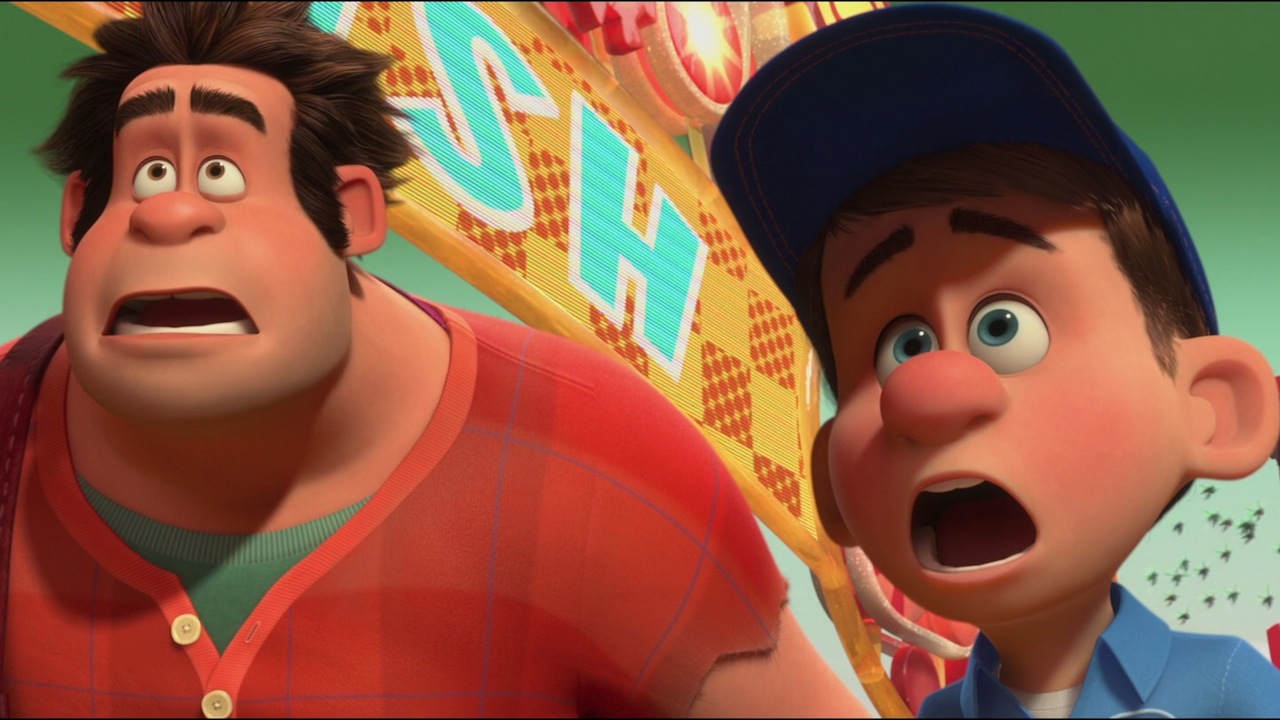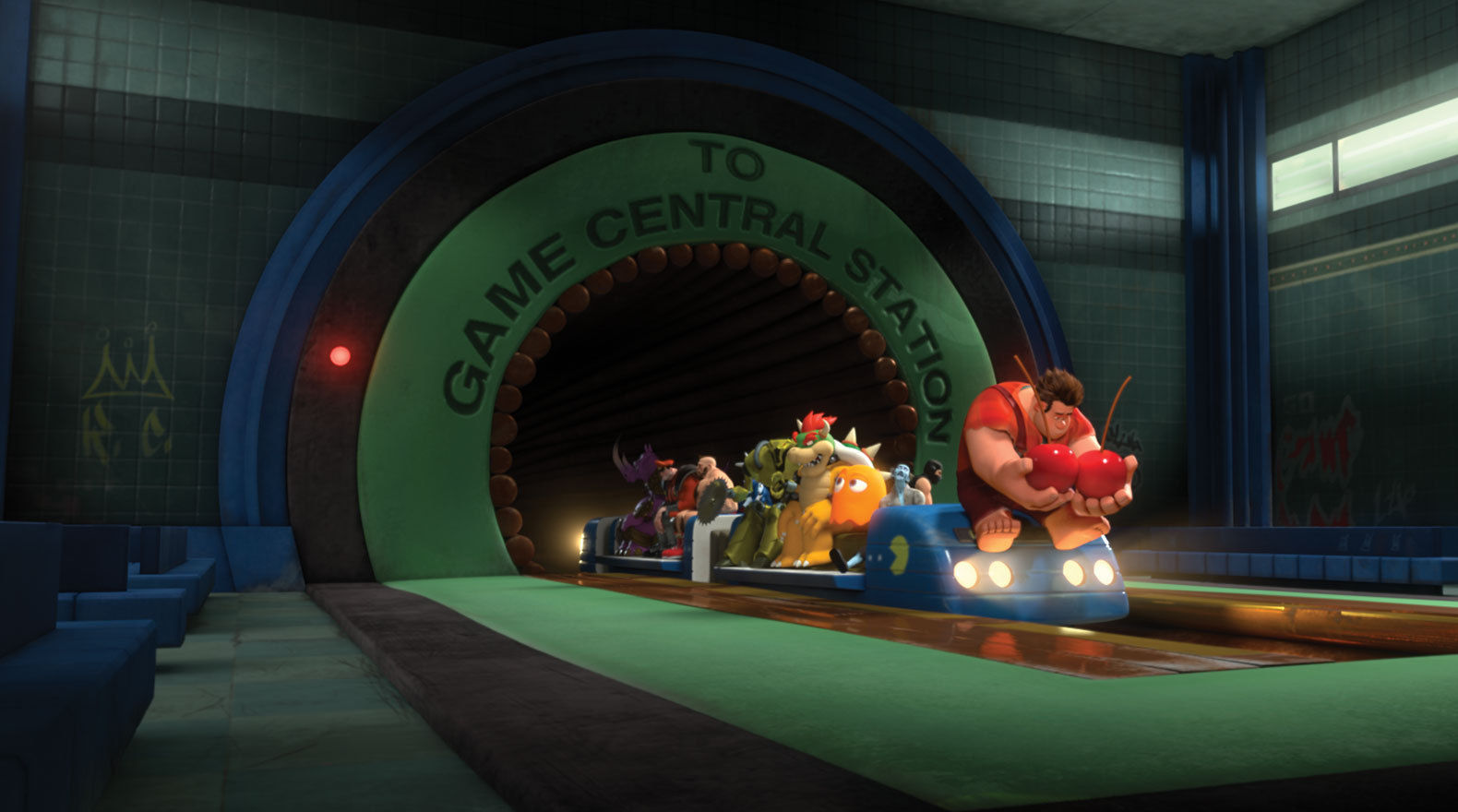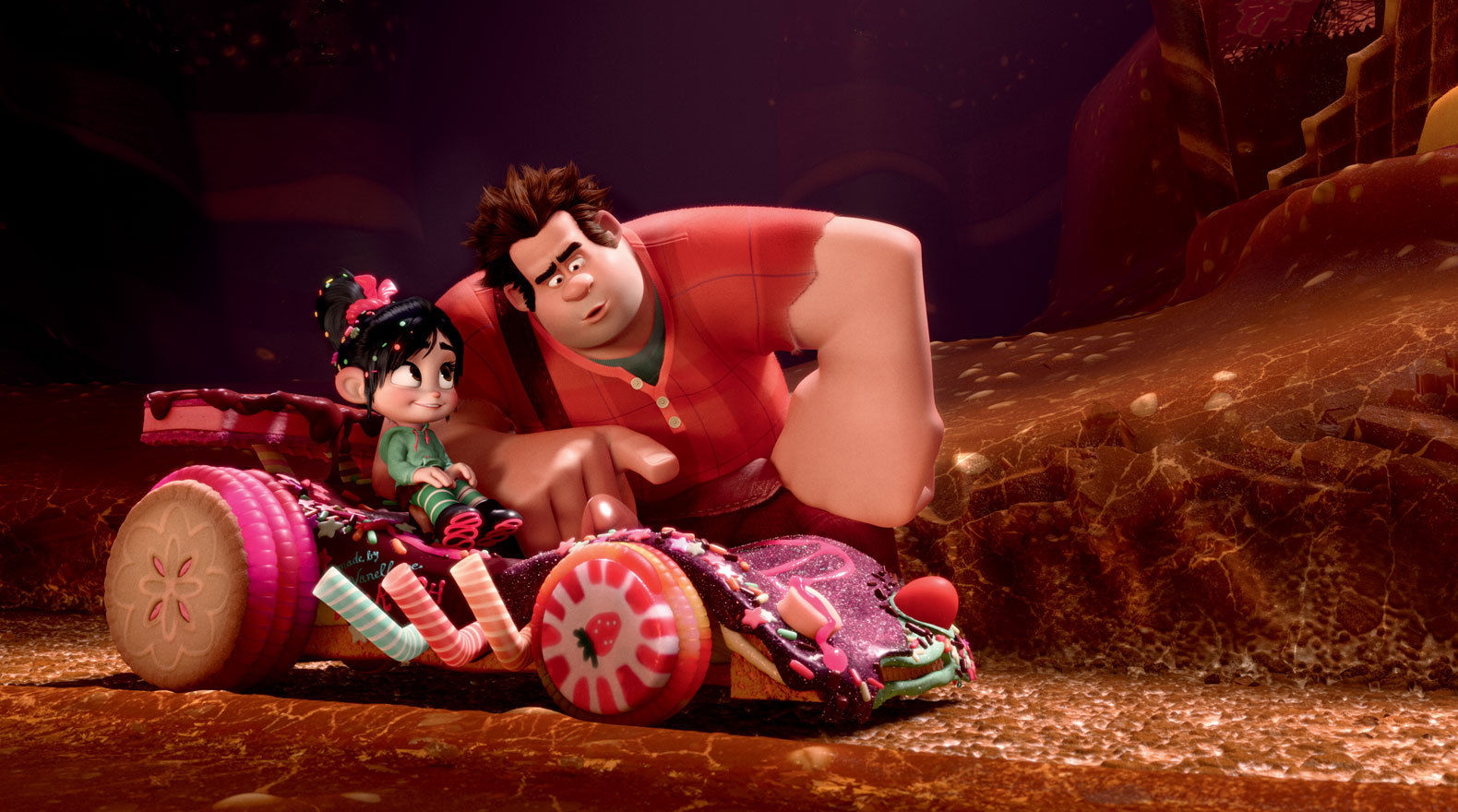Why Wreck-It Ralph succeeds when every other video game movie fails

After years of timid attempts on third-tier properties and the scourge of Uwe Boll, Hollywood has fully embraced the video game movie. Just this year we got Ratchet and Clank, Angry Birds and Warcraft all in a quick burst, and dozens more are in development. But for all of the newfound love for theatrical adaptation, said adaptations have all been middling to terrible. Well, not quite all. There actually has been an excellent video game movie, if you’re willing to stretch the definition of “video game movie” a bit -- Wreck-It Ralph. This Disney tale of a classic video game villain having an existential crisis is so well loved, Disney recently announced a sequel. What did this movie do right that every other movie did wrong? Though the movie sets itself up to be a love letter to gaming, Wreck-It-Ralph manages to be completely opposed to what we currently consider a video game movie.
That’s not to say Wreck-It-Ralph disrespects video games, or even skimps on the details. On the contrary, the wonderful sight of Ralph struggling to open up in the Bad-Anon support group with an array of big-name baddies is just the start of a dizzying array of cameos and tropes. Characters spend their off-hours hanging out at Root Beer Tapper. Pac-Man devours the entire spread at a party. 8-bit characters animate with jerky movements, while a possibly drunk FPS character keeps walking in place when he hits a wall. Sit through the credits, and the movie breaks just like the Pac-Man kill screen. I never thought I’d live to see a Mortal Kombat fatality in a Disney movie, but somehow, it’s in there.
But a strange thing happens just 20 minutes in -- after Ralph crash-lands in Sugar Rush, the video game references vanish almost entirely. Director Rich Moore was handed the keys to a kingdom of easy nostalgia, and pitched them with three-quarters of the movie left to go. That’s a bold move in modern Hollywood, which is built on gleefully milking every asset they have. In a sense, positioning Wreck-It-Ralph as Video Game Reference: The Movie was a grand bait-and-switch to prove an arcade character scenario could survive on the strength of its characters alone.

And what a character the movie has in Ralph. The fact that he’s a villain is just the start of the differences between him and your average video game hero. He’s not a young, energetic person driven by optimism, determination and testosterone, he’s 30 and looks even older thanks to the weight of his unfulfilling, unappreciated job pressing down on his shoulders. Ralph wants to be a stereotypical video game Hero, with a capital H, but everything he does manages to make things worse -- botching a girl’s playthrough of Hero’s Duty, contaminating Sugar Rush with cy-bugs and crushing his relationship with his first friend ever. Ralph is the polar opposite of the types of power fantasies modern video games thrive upon. The movie even frames Ralph’s act of true heroism -- sacrificing himself by creating a Mentos and diet cola explosion that wipes out the cy-bugs -- as his final rejection of his desire to be a stereotypical hero by having him recite the Bad-Anon bad guy affirmation as he falls. He ends the movie in exactly the same villain role as he started, though with new friends and appreciation that actually improve his life.
The other three supporting characters have the same twists and depth. Fix-It Felix could have just been the shining example of a brave, conquering hero, or maybe a broad parody of the trope. In actuality, Felix is milquetoast and mostly useless outside his game, yet he also grows as a character as he comes to empathize with Ralph’s daily slog. Sgt. Calhoun’s introduced as your expected tough space marine, and views blasting bugs as her protective duty. Yet she also has to grapple with the ongoing psychological trauma of war at unexpected times, which is something that gets in the way of video game wish fulfillment. Even Vanellope manages to overcome annoying sidekick status with her own setbacks and growth. It’s far too rare for video game movies to create actual memorable characters, rather than just great-looking props that serve little purpose outside of linking together the various expected set pieces.
Wreck-It-Ralph’s focus on character extends to the movie’s relatively few action sequences, most of which move beyond simple spectacle to infuse the movie with deeper meaning. Ralph’s bug-out in Hero’s Duty paints him as a coward and a cheater. On the flip side, Ralph actually tries to help someone else during the pratfall-packed kart assembly sequence, and even though he creates an unholy mess, Vanellope absolutely loves it. You wouldn’t want Ralph anywhere near an antiquing district, but it shows he’s got a decent heart. And while the mutated King Candy announces he’s the boss battle, the fight mainly gives Ralph the opportunity to fully reject his selfish desire and give himself up for others -- which manages to make him more of a hero than anyone else in the movie, even if he never gets the job title.
It’s rare for video game movies to put as much thought into their action sequences, either due to a lack of respect for the source material or a need to check a box. Why do the Mario Bros. fight a monstrous Bowser? Why do the Angry Birds fight pigs by wrecking their structures? Why does Doom suddenly shift to a first-person perspective? Why does Lara Croft raid tombs? Though the flimsiest of justifications are given, the real reason is because that’s what they do in the game. Fans expect to see these things, so the filmmakers put them in there. But simply ticking boxes doesn’t make for a good movie. The creators of Wreck-It Ralph had it easier than those behind every other video game movie adaptation, because they created the central game worlds and mechanics from scratch to suit the plot. But more to the point, a key difference between Wreck-It-Ralph and other video game movies is that it doesn’t use fan expectations as a crutch. Think about how easy it would have been to have repeated encounters with bigger and badder cy-bugs or multiple kart races just because that would mirror the beats of your typical video game movie. Instead, the creators used these pieces sparingly for bigger effect. The kart race is teased and hidden about as much as the shark from Jaws.
Weekly digests, tales from the communities you love, and more
Finally, Wreck-It-Ralph embraces the one emotion video game movies are probably the worst at conveying -- sadness. While most video game movies would open with a grand spectacle or a rush of adrenaline, Wreck-It-Ralph starts with a schlub griping about his lousy life in a blank room. That’s just the warmup, as the movie keeps on delivering a rainbow of multihued blues. Ralph gets the stinging pain of social rejection and stereotyping when he’s unwelcome at his arcade game’s 30th birthday party, the dull ache of despair in Root Beer Tapper when it seems he can’t find any way to improve his situation, and the frantic feeling of loss when Vanellope steals the hero’s medal.

Then there’s the repeated gut punches that start with the kart destruction scene. Ralph doesn’t just derail Vanellope’s goals, he smashes the literal symbol of his first friendship. And to pile on, he learns moments later he’s doomed his home as well. The movie hammers home the revelation Ralph’s true reward for realizing his dream was nothing but pain by lingering on the sadness and self-hatred that wash over his face. What other video game movie grinds the action to a halt for so long just to wallow in sorrow? There’s bad guys to vanquish and explosions to trigger.
Even though Wreck-It-Ralph turns plenty of video game tropes on their heads, it’s still possible to look at the movie as a beacon of hope for other video game adaptations. Take away all the clever ideas and references, and you’re still left with a solid, character-driven experience. Granted, many big-name video games are best remembered for how they’re played, not the story that’s often added as an afterthought. But that’s no excuse to just assume video game movies will always be dumb as a bag of hammers and/or inscrutable to all but the die-hard fans. It just takes the talent and nerve necessary to take the spirit of a given game and rebuild it to make the people as awe-inspiring as their trials. Video games have spectacle down pat, but the best movies give audiences solid characters, plots and emotion as well. Fans shouldn’t be completely alienated, but transitions between mediums require creative adaptation. If a movie’s good, people who haven’t played the game will like it as well, and possibly get an interest in the source material. In the end, the main thing Ralph wrecked was low expectations.


